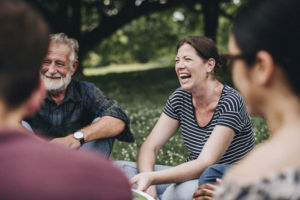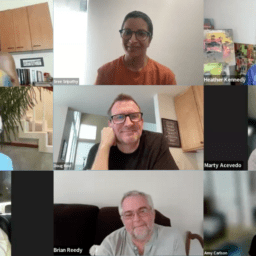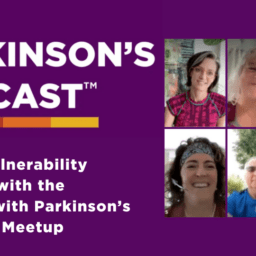For Parkinson’s Awareness Month, we are focusing on the many definitions and approaches to advocacy – from self-advocacy to advocating for others.
When it comes to creating lasting change, community organization is a critical piece of the advocacy puzzle. Working together, facilitating collaboration across groups and sectors, identifying needs, and creating solutions helps change the environment in which we live. Though often slow-going, this kind of change is what leads to better outcomes in the long term. For example, it can remove barriers to care, increase access to resources that improve well-being, and reduce the burden on individuals to advocate for better care on their own.
While community organizing can seem intimidating, it often happens in an organic and grassroots way and does not need to be led by “experts.” Often, community efforts are started by individuals or small groups who notice that things need to be improved and who have the passion and drive to take on the work to improve them. Think of community clean-up projects or neighborhood petitions. It takes persistence and effort to organize this work, but it’s okay to be learning along the way.

Within the Parkinson’s community, we see many versions of community organizing, from people who start support groups to groups who put on an annual Parkinson’s event or work with their local gym to implement Parkinson’s exercise classes. Often, the work begins with a small committee of volunteers, paid staff, or a combination. This group meets to set goals and then methodically works through the steps to achieve them.
The same approach can help address almost any problem in a community, large or small. The more complex the problem, the more thoughtful the committee may need to be about who they engage in their project, what kind of data or information they want to collect, and how long they might expect their project to take, but the principles are the same.
We started the Healthy Parkinson’s Communities initiative because we noticed how powerful community organizing is within the Parkinson’s community. But we also noticed that this community-led work can become isolating and burdensome without the right tools and resources, including a connection to others who are passionate about this work. Through this initiative, we are actively creating, curating, and sharing tools that can help expedite the learning process for groups that raise their hand and want to create change in their communities.
While their projects vary widely (read on for a sneak peek at what they are working on!), the process they are using to put together their Community Action Committees (CACs), collect input and data from their communities, set goals, and work towards them is very similar.
Here are just a few examples of what communities are taking on across the country as part of the Healthy Parkinson’s Communities initiative:
Albany, NY
Steve and his CAC are working closely with Albany Medical Center to support the development of a new Parkinson’s resource center to include living well resources and direction to local resources via a CAC website. They also seek to enhance the connection of people directly affected by Parkinson’s to the community through support of enhancing Parkinson’s wellness programs through the local YMCA.
Baton Rouge, LA
Randy and his CAC are working to support local organizations and professionals that serve the Parkinson’s community to enhance the care and programs they provide. With this work, they hope to create an engagement model between professionals and individuals in the Parkinson’s community that includes seamless direction to local wellness resources via a CAC website.

Bloomington, IN
Carolyn and her CAC are working on gaining support to create a dedicated Living Well Parkinson’s Program to be a central focus of a new rehabilitation hospital in their community. This will bring awareness of Parkinson’s and living well resources to all new hospital staff and clinicians.
Kearney, NE
Anne and her CAC are working to increase awareness of Parkinson’s within the greater community. They hope to increase engagement in Parkinson’s wellness programs and establish more programs for people affected by Parkinson’s.
Shavertown, PA
Debbie and her CAC are increasing awareness of Parkinson’s within the local medical community. Specifically, they want medical professionals to be aware of contraindicated medications for people living with Parkinson’s.

Syracuse, NY
Mary Anne and her CAC are working with Le Moyne College to engage students in the Healthy Parkinson’s Communities initiative. They are working with the college to complete a Parkinson’s demographic and community readiness assessment before creating a strategic plan for their CAC.
If you are interested in exploring community organizing to create change in your area, consider learning more about our Healthy Parkinson’s Communities initiative and downloading our “Getting Started Guide.” This guide will walk you through the first two to three steps needed to prepare to join our community network.

















